| Grossdeutschland at Kursk:
Scenario Preview, Part One
By Mike Bennighof, Ph.D.
September 2023
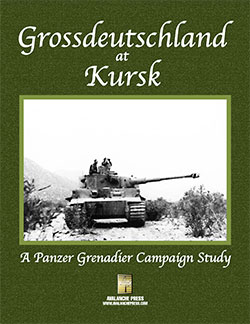 To me, Panzer Grenadier is an outstanding medium for storytelling. To let a battle or campaign unfold as a series of scenarios, with historical text to put them in context and a battle game with victory conditions that tie them together, this is the sort of games I want to design and publish. To me, Panzer Grenadier is an outstanding medium for storytelling. To let a battle or campaign unfold as a series of scenarios, with historical text to put them in context and a battle game with victory conditions that tie them together, this is the sort of games I want to design and publish.
Kursk: Burning Tigers, designed by Mike Perryman, is out in a new Playbook edition that’s been thoroughly revised to fully embraces this style. It has forty scenarios divided into eight chapters; the last and longest of these is focused on the Grossdeutschland Panzer Grenadier Division.
Yet even with that much attention, the Burning Tigers scenarios leave off four days before Operation Citadel, the German offensive at Kursk in July 1943, came to a close (it had to end somewhere – the game could easily have had 400 scenarios instead of 40). Those four days saw intense action, and that provides the 11 scenarios of the Grossdeutschland at Kursk Campaign Study. The action didn’t end when Germany’s Supreme Leader pulled the plug, but framing the Grossdeutschland at Kursk scenario set in that narrow slice of time means that the battle games really do reflect the division’s operational goals (and, because the Germans hadn’t stopped their offensive while the Soviets had begun theirs, it means that both sides get to attack and defend).
I’m quite pleased with this scenario set, and I think you’ll like it. Let’s have a look at the first chapter.
Chapter Nine
Turn to the West
Furious Soviet counter-attacks against the left flank of the German 48th Panzer Corps slowed its advance to the north-east. The Grossdeutschland Panzer Grenadier Division should have been covering in turn the left flank of the SS militia divisions advancing on Prokhorovka, but instead were drawn steadily to the west as they engaged in furious combat with the Soviet 1st Tank Army. If they could just crush these Soviet forces and secure their flank, the corps staff hoped, they could resume the advance on their actual objectives. Yet despite enormous losses of men and machines, the Red Army kept fighting.
Scenario Forty-One
Advance at Kalinovka
11 July 1943
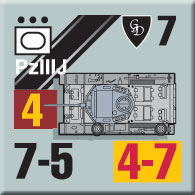 The Grossdeutschland Division, having worked its way around the flank of the Soviet Sixth Tank Corps, sent most of its force southward to complete the encirclement of the hapless Red Army formation. But the Soviet 1st Tank Army pressed the division’s northern flank, trying to free the endangered tank corps. The Grossdeutschland Assault Gun Battalion would have to fend them off. The Grossdeutschland Division, having worked its way around the flank of the Soviet Sixth Tank Corps, sent most of its force southward to complete the encirclement of the hapless Red Army formation. But the Soviet 1st Tank Army pressed the division’s northern flank, trying to free the endangered tank corps. The Grossdeutschland Assault Gun Battalion would have to fend them off.
Conclusion
The assault guns shot up seven T34 tanks, according to German claims, and brought the Soviet advance to a halt. The Germans would not exploit their success, however, as 48th Panzer Corps commander Lt. Gen. Otto von Knobelsdorff opted to withdraw the Grossdeutschland Division from the front and shift it slightly eastwards to spearhead a drive along the left flank of the II SS Panzer Corps.
Notes
It’s sort of a tank battle – the German “tanks” here are StuGIIIG assault guns, which are sort of like tanks, just not quite as good against real tanks. Operation Citadel is starting its second week, and the Red Army still has plenty of fresh formations. This is not a good sign for the bad guys.
Scenario Forty-Two
Retreat from Berezovka
11 July 1943
 Hoping to seal the Soviet Sixth Tank Corps in a pocket, the German 48th Panzer Corps ordered the Grossdeutschland Division to complete its encirclement of the Soviet formation. But the Red Army tankers, ordered by front commander Nikolai Vatutin to break free, continued to fight their way westward toward their own lines. Hoping to seal the Soviet Sixth Tank Corps in a pocket, the German 48th Panzer Corps ordered the Grossdeutschland Division to complete its encirclement of the Soviet formation. But the Red Army tankers, ordered by front commander Nikolai Vatutin to break free, continued to fight their way westward toward their own lines.
Conclusion
Grossdeutschland’s attack, spearheaded by the division’s panzer regiment with the remaining Panther tanks that could still be convinced to run, inflicted massive casualties on the fleeing Soviets, but could not seal off their escape route. The Soviets drove off one arm of the German attack, and held off the main assault long enough to continue their westward exodus.
Notes
Here we have an odd scenario, with the Soviets trying to move from east to west to get away from the Germans, and the Germans coming down on them from the north to cut off their escape. While the Germans do have many advantages here, they’re also asked to achieve a great deal in order to win.
Scenario Forty-Three
Still Dangerous
11 July 1943
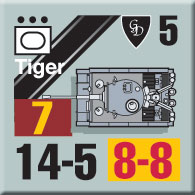 The westward advance by the Grossdeutschland Division left it vulnerable to a counter-attack “on the backhand” from the Soviet formations fighting to re-establish contact with Sixth Tank Corps. M.E. Katukov of 1st Tank Army had gathered his forces in a “dense defense” on the previous day, and now he unleashed them at the boundary of the Grossdeutschland Division and the neighboring 11th Panzer Division. The westward advance by the Grossdeutschland Division left it vulnerable to a counter-attack “on the backhand” from the Soviet formations fighting to re-establish contact with Sixth Tank Corps. M.E. Katukov of 1st Tank Army had gathered his forces in a “dense defense” on the previous day, and now he unleashed them at the boundary of the Grossdeutschland Division and the neighboring 11th Panzer Division.
Conclusion
The attack had great success, driving past the Germans deep enough to reach the rear elements of the Grenadier Regiment then pressing southward against Sixth Tank Corps. Counter-attacks by Grossdeutschland and 11th Panzer Division drove back the Soviets, but the 48th Panzer Corps’ hopes of encircling Sixth Tank Corps now appeared to slip away.
Notes
It’s a strong Soviet attack, including plenty of tanks backed by artillery, against German motorized infantry who are not ready to have the tables turned on them just yet. This one is tough on the defenders.
Scenario Forty-Four
Hill 247
11 July 1943
 On Hill 247, the Grossdeutschland Division’s Armored Recon Battalion awaited relief by 3rd Panzer Division’s 3rd Armored Recon Battalion. Tied up in its own problems, 3rd Panzer Division arrived much more slowly than 48th Panzer Corps had hoped. That left the lightly-armored Grossdeutschland battalion on its own to fend off Soviet tank-supported attacks. On Hill 247, the Grossdeutschland Division’s Armored Recon Battalion awaited relief by 3rd Panzer Division’s 3rd Armored Recon Battalion. Tied up in its own problems, 3rd Panzer Division arrived much more slowly than 48th Panzer Corps had hoped. That left the lightly-armored Grossdeutschland battalion on its own to fend off Soviet tank-supported attacks.
Conclusion
The Grossdeutschland troops would not be relieved until 0800 the following morning, but the recon outfit held onto the hill. Relief would bring no relief; almost immediately the recon troops would be back in action fighting heavy armored forces their lightweight vehicles had never been intended to match.
Notes
The Germans are trying to hold on with a mixed battle group of armored cars, halftracks, infantry and support weapons – that is, a recon battalion – against a strong Soviet attacking force backed by artillery. Despite very high morale, this one is tough on the Germans.
Scenario Forty-Five
Vatutin’s Riposte
12 July 1943
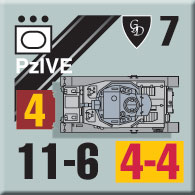 Third Panzer Division had not arrived to take over the positions of Grossdeutschland’s II and III Grenadier battalions when the Soviets attacked following a heavy artillery bombardment. Despite a solid week of intense combat, the Soviets still had fresh reserves of men and tanks to follow up the shelling. Third Panzer Division had not arrived to take over the positions of Grossdeutschland’s II and III Grenadier battalions when the Soviets attacked following a heavy artillery bombardment. Despite a solid week of intense combat, the Soviets still had fresh reserves of men and tanks to follow up the shelling.
Conclusion
The Soviet attack overran Grossdeutschland’s defenses, forcing the panzer grenadiers to counter-attack and restore the line themselves, as their relief still had not shown. Not until late afternoon would the Grossdeutschland troops kick the Soviets out of their positions, instilling a day’s delay in their re-deployment to aid the SS militia.
Notes
Here we have a set-piece Soviet attack, with waves of infantry backed by tanks, against a prepared German defense likewise backed by artillery. This one is going to be a nasty, bloody struggle.
Scenario Forty-Six
Tolstoye Woods
12 July 1943
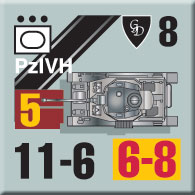 Stretched thin as it tried to cover for the withdrawing Grossdeutschland Division, the 3rd Panzer Division came under a heavy attack from the newly-arrived Soviet 184th Rifle Division backed by the Fifth Guards Tank Corps. They overran the Germans holding Hill 258.5, prompting 48th Panzer Corps to turn the Grossdeutschland’s panzer regiment around and send the tanks – including the handful of operational Panthers – to take it back. Stretched thin as it tried to cover for the withdrawing Grossdeutschland Division, the 3rd Panzer Division came under a heavy attack from the newly-arrived Soviet 184th Rifle Division backed by the Fifth Guards Tank Corps. They overran the Germans holding Hill 258.5, prompting 48th Panzer Corps to turn the Grossdeutschland’s panzer regiment around and send the tanks – including the handful of operational Panthers – to take it back.
Conclusion
Spearheaded by the remaining three Tiger tanks, the Grossdeutschland panzers kicked the Soviets off the hill, and then someone noticed that these masters of war had forgotten to bring more than a handful of infantrymen with them. The German tankers loaded up cases of American combat rations the Red Army had left behind before beating a hasty retreat back to their own lines.
Notes
It’s a German tank attack, and that’s almost all that they have – tanks. Tank-only forces usually don’t fare well in Panzer Grenadier scenarios, particularly when the enemy has plenty of infantry themselves.
You can order Grossdeutschland at Kursk right here.
Sign up for our newsletter right here. Your info will never be sold or transferred; we'll just use it to update you on new games and new offers.
Mike Bennighof is president of Avalanche Press and holds a doctorate in history from Emory University. A Fulbright Scholar and NASA Journalist in Space finalist, he has published a great many books, games and articles on historical subjects; people are saying that some of them are actually good.
He lives in Birmingham, Alabama with his wife, three children, and new puppy. He misses his lizard-hunting Iron Dog, Leopold.
Want to keep Daily Content free of third-party ads? You can send us some love (and cash) through this link right here.
|
